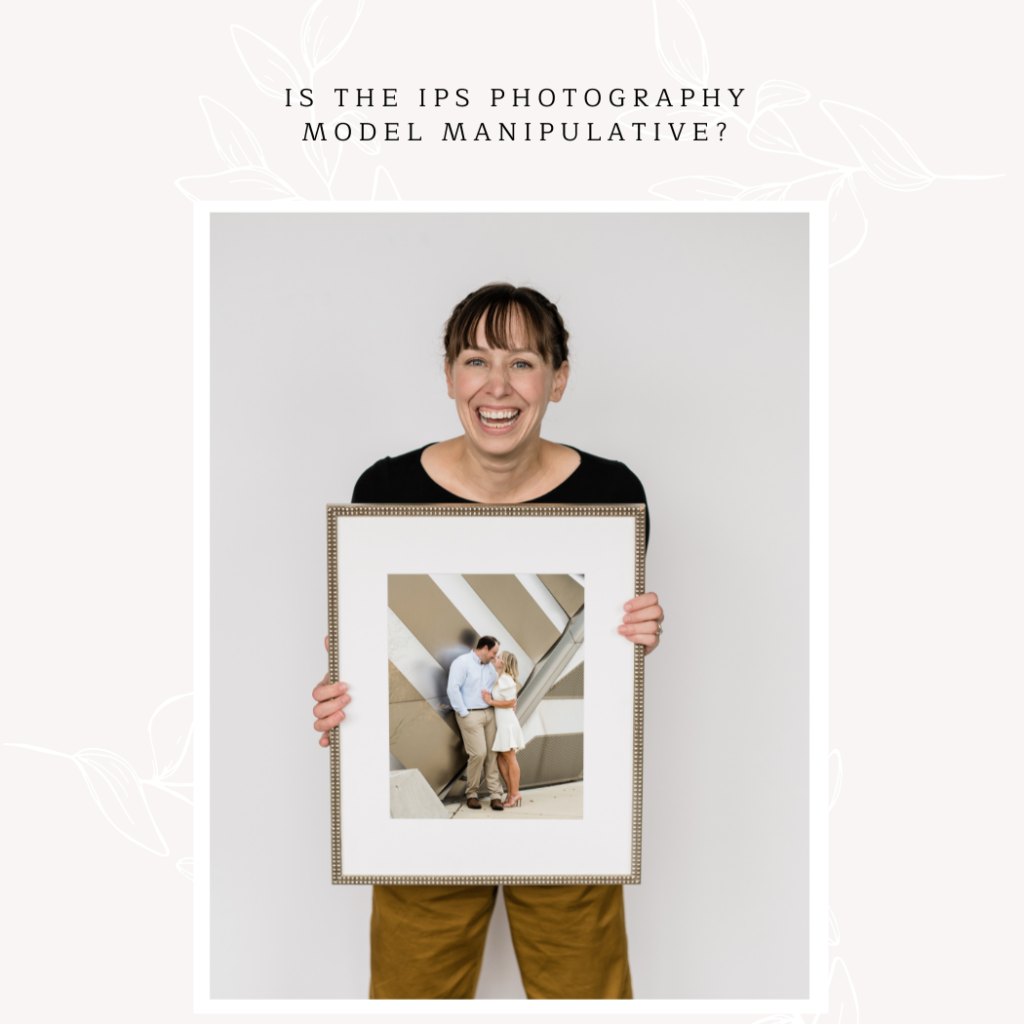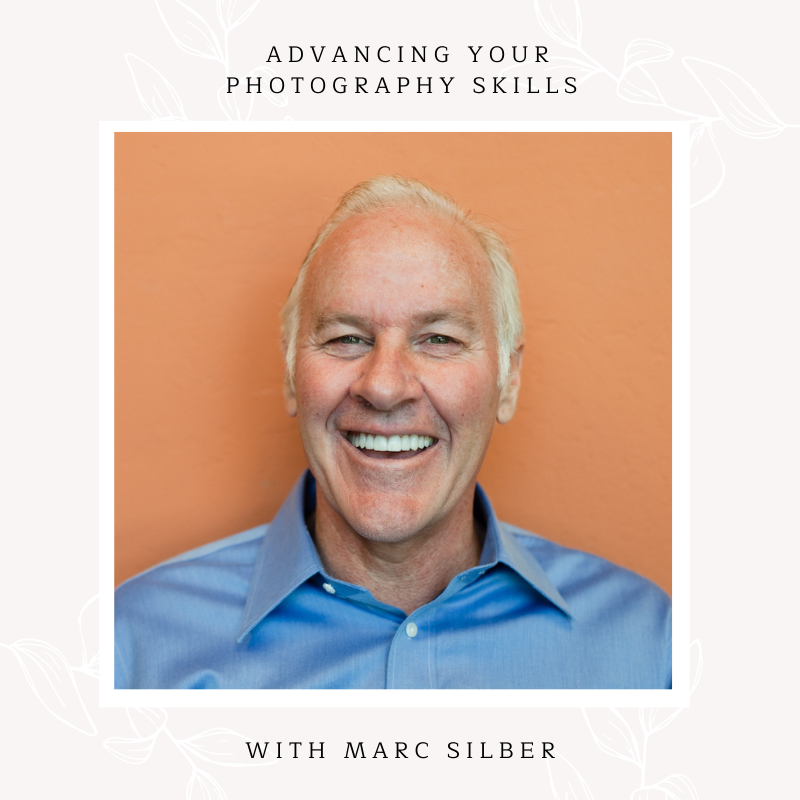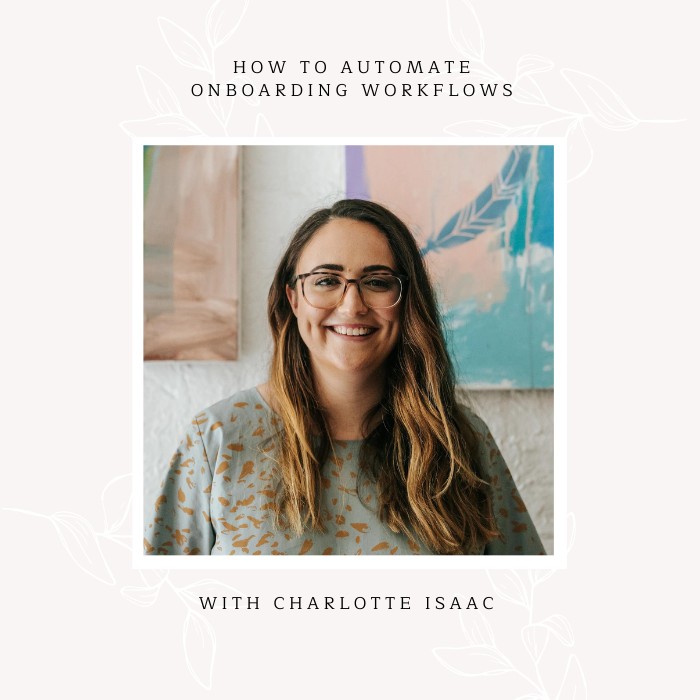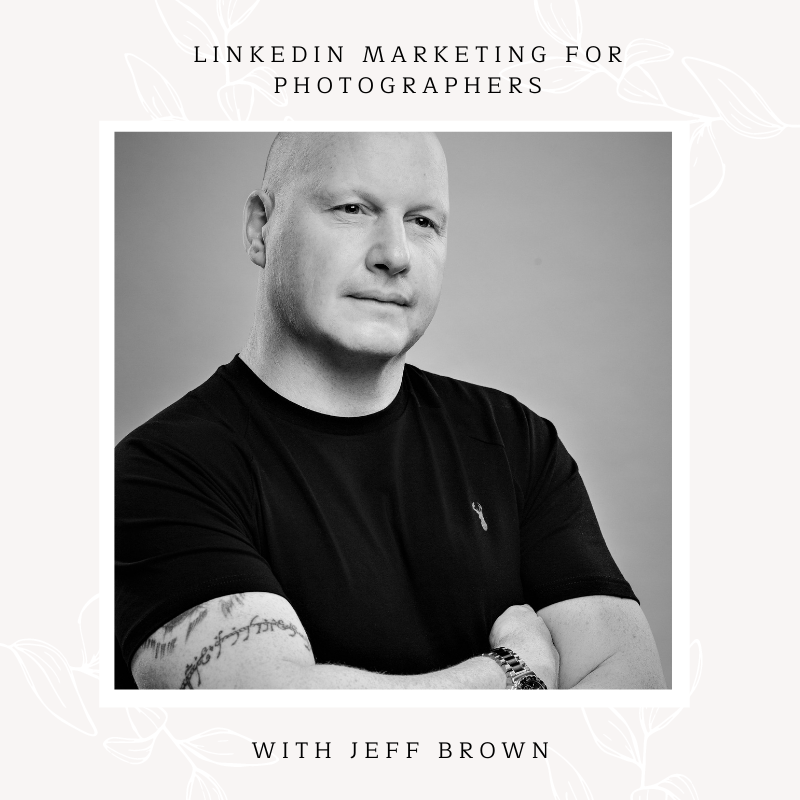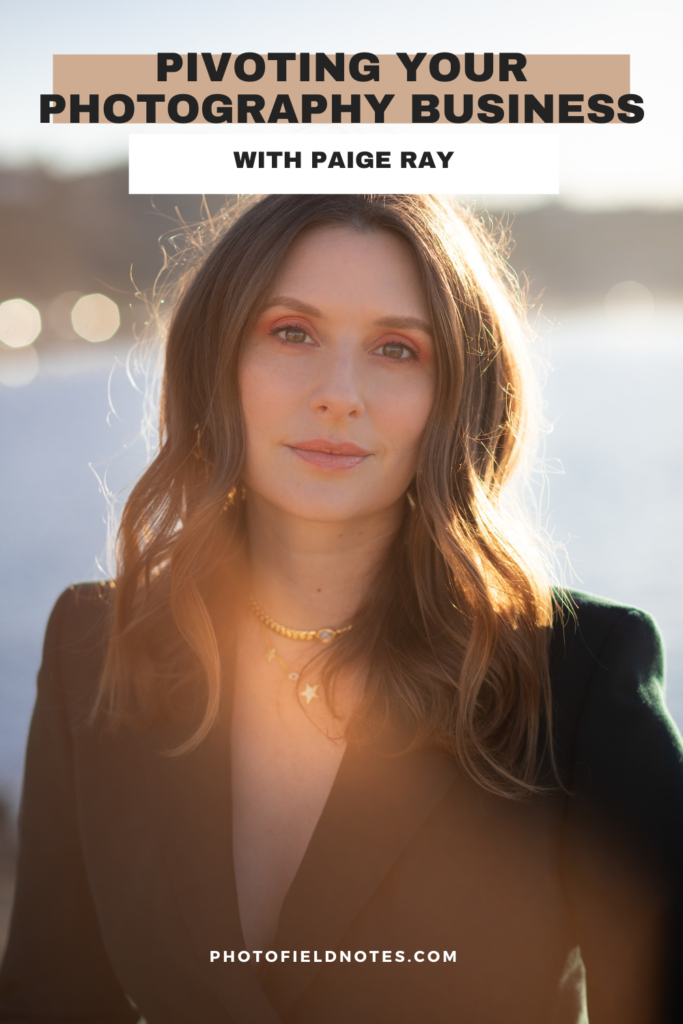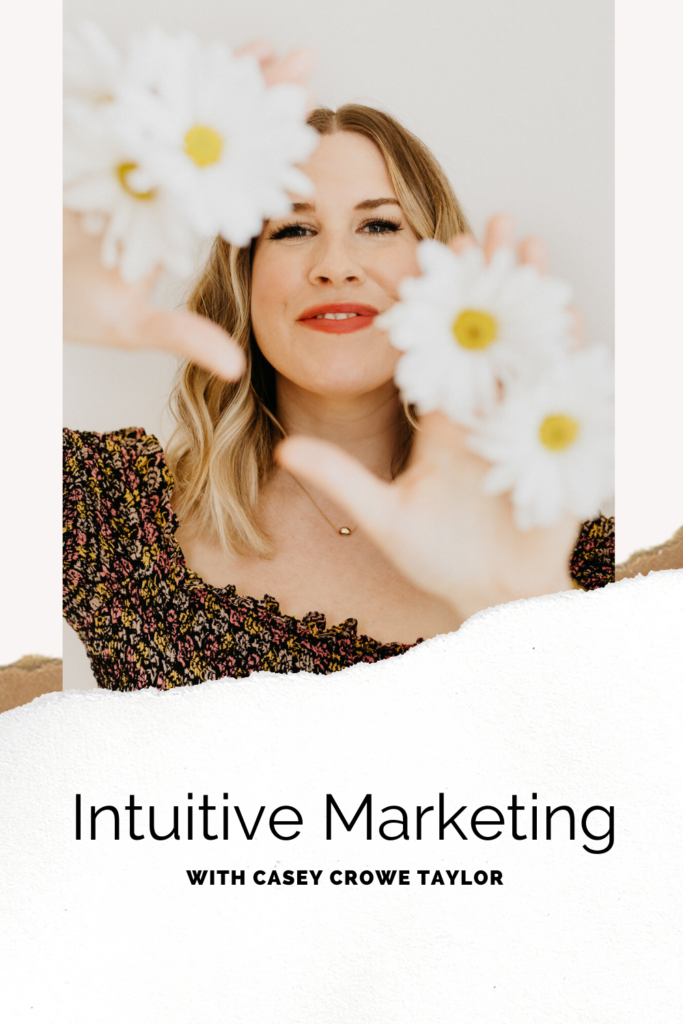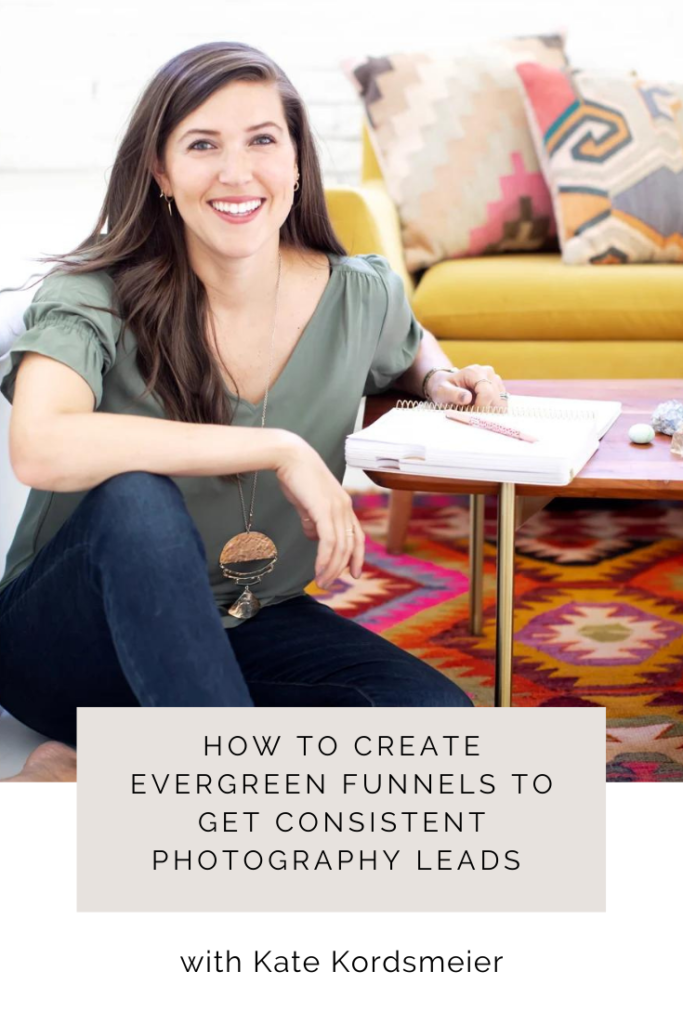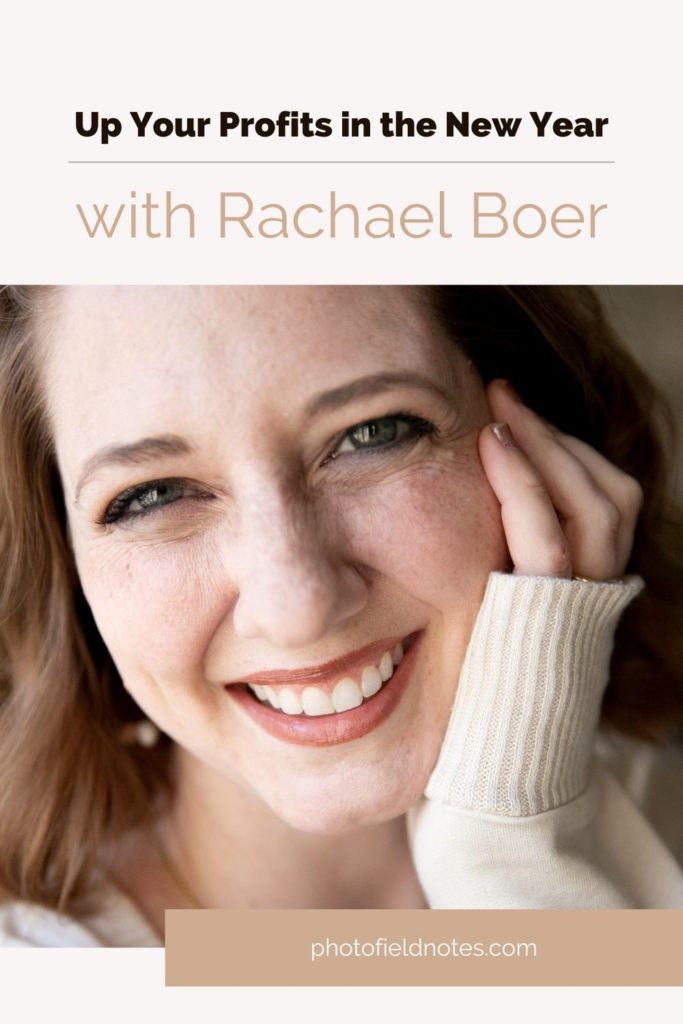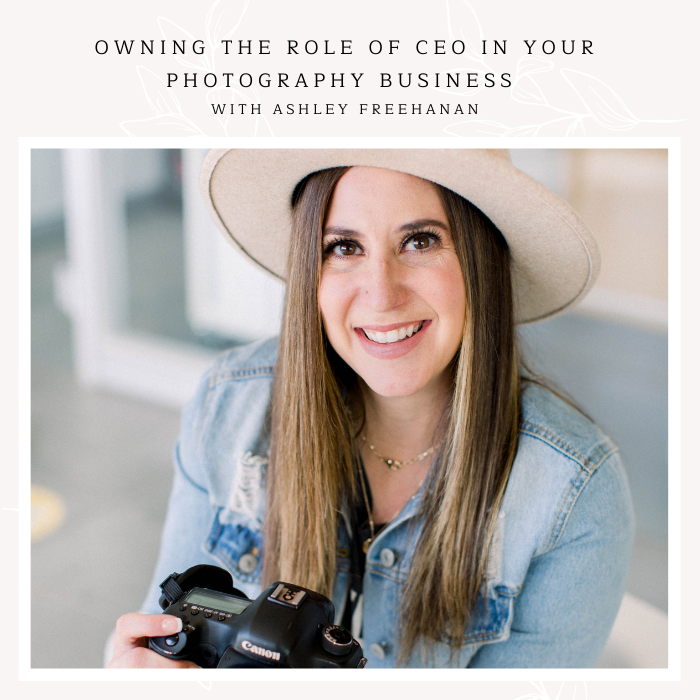
Ashley Freehan is a multi-passionate entrepreneur. She is a business coach for photographers, a brand photographer, and podcaster. She is passionate about helping photographers confidently step into their role as CEO in their business so that they can increase their profits, while working less and without sacrificing their family or their sanity. She does this through her podcast and group coaching program called the Side Hustler to CEO.
Find Ashley Online
Transcript
Introduction 0:01
Welcome to the photo Field Notes podcast, where you’ll find stories, tips and inspiration from professional photographers to get you taking action in your own business and making your business dreams a reality.
Allie 0:15
Hi, everybody. Today, I am here with Ashley Freehan. And she is kind of like me, like has multiple business interests, which I think I think I’m starting to realize that like, I can’t, even though we’re all told, just do this one thing. It’s a lot of fun to kind of like experiment with different things. So she is a business coach for mom photographers. She’s a brand photographer, she’s a podcaster. I’m seeing some similarities here. She’s a wife, and the one that impresses me the most is that she’s a homeschooling mom, having spent a year in pandemic life with children home, I have the utmost respect for all homeschooling parents. But she’s passionate about helping mom photographers to confidently step into the role thinking of themselves as the CEO in their business so that they can increase their profits while actually working less and not sacrificing that time with their family or sacrificing their sanity. So she helps through her podcast, she helps through group coaching her group coaching program, called the side hustler to CEO. And I am just really excited to have you because I think that again, there’s so many similarities between you and I. So Ashley, let’s first of all, welcome. Hello.
Ashley 1:28
Thank you for having me. This is so much finale.
Allie 1:31
Yes, it’s great to have you and let’s get into I always start for frequent listeners, they know I always start with their backstory. So I want to just hear kind of your quick backstory on how you got into the photography side. How you got into the coaching side, and kind of like branding, specifically getting it all pulling it all together to where you are now.
Ashley 1:50
Yes, absolutely. So welcome, listeners, I’m so glad to be here as Allie’s guest, I will start back towards I guess I’ll just start at the beginning. So my husband and I, we got married back in 2008. And I had an interesting experience with our wedding photographer. I kind of just felt like, they didn’t really get to know us on a personal level. And I didn’t feel like I had the best experience. Now the photos came out, okay, I love our wedding photos. But it was just the experience side that I really felt like I was lacking. And I was like, Oh my gosh, you can do this as a job. Like I didn’t really ever think of wedding photography as a job. But of course, you know, when you get married and you step into that whole world, you Your eyes are opened and so I sort of just dove right in of like, okay, how can I do this? So I started like most photographers, shooting anything and everything, anyone who would let me shoot them for free, you know, doing model calls, all the things to see really what I was interested in. So I probably was in that hobby stage, I would say so i We got married in 2008. But I didn’t really start photography until 2009. And so for probably the next three years, you know, it was just anything and everything. And then in 2012, I took my first big leap, I invested in my first workshop as a photographer, and things really started to change. And I decided I am going to do this seriously. I am going to do this as a business and I decided to niche down into wedding photography. So for 10 plus years, I’ve been a wedding photographer. And then just most recently, the past couple of years, I started transitioning into brand photography, and really fell in love with that. I decided to make this transition actually before I decided to homeschool. So we have not always homeschooled. My kids are seven and 10. So currently, they’re in second in fifth grade. And so this is our very first year homeschooling. You know, aside from the pandemic, where we were all forced to homeschool, that was a totally different experience. I just want to throw that out there for any moms who feel like they could never homeschool after that experience. It’s different. It’s really different. And as that as I transitioned into homeschool life, it definitely was hard. And we’re going to talk about that today of like, how to juggle both and how to really manage both, especially as they’re older, you know, you might be thinking, Oh, that’s gotta be such a breeze because they’re older. It’s not. So we’re gonna talk about that. But the coaching side actually happened really on accident. A couple of years ago, I felt really lonely as a mom and a business owner. And I just felt like I had so many friends that were moms, but they couldn’t relate to the business side. And I had so many friends that were business owners but they weren’t moms yet. And so they really didn’t understand that part. And I just felt lonely. I was like nobody really understands what it feels like to do both. And so God really laid it on my heart to actually see Start an in person Meetup group for mom business owners. And so just over the past few years, and with COVID happening, a lot of transition happens because my in person meetups couldn’t happen anymore. And then I really just decided, You know what, I love mom, business owners in general. But I really feel like I can provide so much knowledge, encouragement and support with the mom photographer. So that’s really when I started just niching down to speak specifically to them, because I know them inside and out. I am that person. And I just felt like I have so much knowledge to give. And so that’s how the side hustler to SEO program was born. And it’s just that’s kind of where I am today. That’s full circle how I got here.
Allie 5:47
And have you now transitioned out of weddings? Are you? Are you in photography? You’re purely focused on branding, right?
Ashley 5:52
Yes, absolutely. So I do take a few weddings here and there. But I have like specific specifications, I really want it to be, you know, like four hours or less. And it does have to be, you know, really close and local, I don’t really want to travel anymore. It’s just hard. You know, like when you transition, it’s hard to say no to that. Because, you know, weddings have just been so good to me for so many years. And I still love them. It’s not that I don’t love them. It’s just it became something that was super time consuming. And I just, I wanted more of that time freedom with my family on the weekends. And so that that’s kind of why I made that choice. Yeah,
Allie 6:30
it’s interesting, because I’m kind of I’m probably a few years behind you on that transition on that journey, moving from weddings, to branding. So I still have weddings this season. But I did cut them off at a certain point. And I found like taking them off my homepage, super boosted my branding by not having weddings, it just like made a huge difference for marketing branding. People saw me as a specialist. But I took them off my homepage. But there’s still like so much Google juice there that people find me anyway. So I’m learning to say no, it’s a it’s a process, which may, which may take us into some of these things we’ll talk about today. Okay, so with you doing all of these things, I’m very curious, because you are juggling a lot of balls. I wanted to ask you what a day in the life looks like. But that’s not even fair. So I thought I’d ask you what a week in the life looks like. And if you need to expand to a month because it’s too different. That’s fine. But I just want to kind of know, like, walk me through a little bit of what your life looks like, as you balance all of these different things that you do.
Ashley 7:27
Yes, absolutely. Such a good question. And I love to hear this from everyone, right? Because we all have a different way that we approach things, we all have different strategies that we use. So I love this question. So much. So day in the week definitely is more applicable. Because, you know, as much as I really preach and wish this was a possibility to make every day, similar every day, it just doesn’t work that way. Even like, you know, on a Monday, my Monday today will look very different than Monday next week, because that’s sort of my home still homeschooling style in general is I do want to be flexible, my work is very flexible. And so I do want to make sure that I leave room for fun, right leave room for things that we can kind of go on an adventure if we want to. And if I’m not feeling like working today, I can move my workday to a different day. But just to give you kind of an overview of what an ideal week looks like, we do school only three days a week, so Tuesday, Wednesday and Thursday and only in the mornings. And we have a very loose style of how we like to do things we do unit studies so we do school together a lot and we don’t do a lot we don’t do you know rigorous we’re not trying to recreate the school at home. So I love that aspect of it and then I leave my afternoons open for if we want to go do adventures or if I need some extra time to work I have that time available as well. Now Mondays are specifically set aside for work for me and my kids are home with me and so we just have a very different schedule they know that Mondays are my work day, we actually are going to be getting a membership to a trampoline park so that I can go work while they jump. And so I do have to do you know a lot of what you guys do to be creative with working while your kids are there and a lot of things that you know we might do that might look different than what you do is we do a lot of special time and this means one on one time with each kid so that they feel really taken care of before I’m about to go leave and you know go on a call like this right so there is some back stuff that I have to do in order to prepare for a long stretch of them being taken care of without me right there behind me alley can see they’re behind me in the living room area right now playing I don’t know what they’re doing. I hope they’re not getting into anything but you know this this might be a 30 to 45 minute interview. And they just know when mom gets on a call, I need to give her that time it but they do it willingly because I have given them the time that they need. So that’s one tip I can definitely give you if you’re working at home with kiddos is to just give them that time they need front load that connection with them before you were going to be, you know, Mia for a little bit. Um, so that was Mondays, Tuesday, Wednesday and Thursday. And then on Friday, they actually go to an enrichment program for homeschooled kiddos. So they’re gone. It’s it’s a public school, actually. And so they’re gone from 830 until 310 that day. So I actually try to push everything to Friday that I absolutely don’t want to do when they’re around, which is usually like recording my own podcast episodes, doing any type of like video filming, just all the things that are easier to get done when they’re not there. That goes on Friday. And then my Saturday and Sunday, as much as I would love to say I take the weekend off, because we homeschool and things are kind of crazy. And they never fit in the exact time block that I want. Even though I do do that, which we’ll talk about later, too. I do ask that my husband helps me out on the weekends. So I have a about two to three hour time block every week, where I go to either a coffee shop or a restaurant and grab chips and salsa while I work on the CEO portion of my business, which again, we’re going to talk about as well. But that’s really helpful for me. So again, I have to get really creative about how I get these time blocks in. But it’s really just about creating a plan and consistently sticking to that plan.
Allie 11:40
Okay, and you probably even started to touch on answers for some of my other questions. When you’re doing branding photography, since that has to happen in person. Are you doing those on Fridays? On the weekends when you typically scheduled those?
Ashley 11:51
Yes, I try to do that only on Fridays. So I will not even offer a Saturday unless a client specifically requests it because it might be you know, the day that they don’t work. And so they’re like, Hey, can we do a Saturday? Or, you know, I need you to come to my office and I don’t have clients on Saturdays. So something like that. I won’t offer it. But again, I will do it if they request it.
Allie 12:15
Yeah, because there’s a different energy to sitting in a coffee shop working versus the requirement of being on an at a session. And that’s what what I love about brand name is that it happens during the week. That’s my very favorite thing.
Ashley 12:28
Like daytime hours. So no more like yeah, two minute sessions giving up your evenings and your weekends. Those are, those are so precious.
Allie 12:36
Yeah, that’s a huge advantage in that world. Okay, so we’ve talked a little bit about kind of owning the role of CEO in your business. So what does that mean to you to take on to kind of give yourself the title of CEO and your business to have that mindset?
Ashley 12:51
Yes. So this is actually a somewhat newer concept to me. So even though I have been in business for over a decade, I would say probably the last two to three years, I’ve really learned what it means to step into that role as CEO. And basically what that means is that, yes, you are the photographer in the business. And yes, you are, you know, all the other things, if you don’t have help yet as a solopreneur. But first and foremost, you are the CEO, and what that looks like is that you are in the driver’s seat, you are the one that is, you know, in, you know, thinking forward about your business, or you should be right. And I think how I sort of viewed it was, you know, I just do this on the side, you know, my husband, he has a full time job, and he brings in, you know what we need to cover bills, and like, my business is just fun money. So I never really saw myself as a legitimate business, until I started seeing myself through the lens of SEO. So SEO just basically means that you are taking your business seriously. It could be a side business, right? Maybe you’re giving part time hours to it, but it’s still a business. And I think when you own the fact that it’s a business, things begin to change, you start to make different decisions, you start to spend your time more critically, because you realize, especially when your time is limited as it is for me, you start to realize what’s the most important things to be working on as a CEO. And you’re sort of left feeling like, oh, you know, I don’t need to do all these other filler things that I thought I needed to do. So I think treating your business like a real business is step one, and really seeing your business as a way to increase profitability for your family. And I think a lot of people tend to just throw out a number. They’re like, Oh, I should be charging this for a session. And they really haven’t done any of the backend work to know like, Is that sustainable? How much am I actually taking home from that? And so that’s another thing that I think is really important that I help my students understand is that you need to be making sure that what you’re charging thing is actually going to fit into that bigger picture plan. And so that again, is another thing that a CEO would do is look at the bigger picture plan. So that you know, 20,000 foot view from above looking down, where do you want your business to go. Because if you’re always sort of just doing the bare minimum, and you’re always just sort of doing, you know, the things that are urgent, you’re not going to really see a whole lot of growth very quickly, it’s going to be a lot more of that slower growth. And you’re going to feel sort of like you’re in a hamster wheel of like, When am I ever going to see traction? And that’s why it’s because you don’t have the bigger picture, you know, in your top of mind. And so I think that’s really important. And then also just prioritizing time, I think this is what it comes down to is sure, you might be listening and saying like, yes, Ashley, I agree with all those things. Like I am the CEO, I know that I need to do this, but like, why can I do it. And a lot of it is just prioritizing the time. And as I mentioned my CEO time, it’s hard to get in, right? When you have the sessions that need to be edited, and you have, you know, the phone calls that you have to be on and there’s just it feels like there’s so many things you have to do. That’s kind of like the last thing on the list. When really, it should be the first thing on the list. And that should be the very first thing that you’re thinking about when you’re planning out your week is when am I going to have time to think about the bigger picture of my business, I need to be working on my business, not necessarily always in my business. And so we need to get out of the weeds out of the never ending feeling of always being hustling, trying to get things done. And really think about how can we plan this strategically, so that we do have more time. So we are more profitable, and we’re working less and have more time with our family. That’s what that’s what I’m here for.
Allie 16:50
So that’s the time you’re taking on Saturdays for as far as blocking your time because you have limited time Mondays, Fridays, and a little bit on Saturday. So Friday is when you’re like if you’re meeting people we’re doing sessions Saturday is that planning time and I think you said Monday was like, sometimes interviews, we’re recording this on Monday, and working in general. So you are dedicating a couple hours every week, just to the strategic vision is what it sounds like. Okay. And now with that one thing that I think a lot about as my own kind of version of thinking of my business as CEO is not just budgeting time and making a plan for the year thinking about like, how do I want to grow? Do I want to grow? It’s also it’s figuring out the budget. And so for me that’s, you know, first looking at my family’s budget and saying, How much do I want to bring in as the contributor of a dual income household? And then figuring out okay, like, based on that, what do I want to book I want to book more branding, how many sessions do I need to book? How am I going to go about doing that? How does the budgeting what does that look like for you, when you’re trying to figure out the balance between taking on the right number of sessions? Do you plan for how many sessions you want to book per year? Do you plan for what you want to spend per year? Just give me your view on that? Because I know it’s different for everybody?
Ashley 18:08
Yes, I love that you bring this question up. I think this is totally different for everyone. And I can speak to what I do right now. But so I own the purpose gathering, right, that is my LLC, kind of like parent company. And then I actually have three revenue streams that stem from the purpose gathering. So I do brand photography, I do coaching for mom, photographers, and then I also host in person workshops and teach people photography. So whether that be students like homeschooled kiddos, or adults, so I have three revenue streams, which again, is like having three different businesses. And I might be talking to some other, you know, multi passionate entrepreneurs out there too, who maybe have multiple revenue streams as well. And when you’re thinking about multiple revenue streams, you’re also thinking about, you know, marketing, sales, there’s a lot that goes into offering multiple things. And so, what I do is I like to think of okay, what is like my bare minimum, like that I want to contribute to my family. And really, my bare minimum is zero, I don’t really have to contribute anything to my family right now. There are things that I want to contribute and so instead of saying zero, because if you strive for zero, you’re not going to get very far. So I’ve tried to choose a bare minimum goal, that’s something like okay, what would I feel confident in contributing to my family? And so maybe that’s $1,000 a month, okay. So I start with my bare minimum goal, okay. If I could bring in $1,000 a month that would be great. Now what would my would be better goal, okay, so like, okay, my bare minimum is 1000 would be better would be 2500. Okay, cool. Then I’m going to think of my dream revenue like what would be the dream take home Boom. And so I actually have a free challenge where I walk moms through exactly what I’m sharing with you guys right now. And on average, most photographers take home half of their gross monthly income. So when I am walking through this, I am thinking, Okay, if I want to make $1,000 a month bare minimum, then my revenue has to be at least 2000 a month, right? So that’s where I start is I think about those three revenue goals. And I start with my bare minimum. So until I’m hitting that bare minimum, consecutively three to six months, you know, I’m not going to go on to the next one, right? There’s just no point in overextending yourself and going too far. So once I do that, then I start to think about, you know, how many sessions a month? Can I actually do? Or do I want to do right, we can all do more than we want to do. Right? So then I start talking,
Allie 20:57
and I’m glad I’m sorry, I’m glad you bring that up. Because I talked about this a lot on the podcast, but like, knowing what’s enough is just as important as knowing your minimum, because we could all like, get to a point where we’re just booking our lives away, and I’ve been there, and I’ve been like, just never let me do this again. So it’s good to have both views.
Ashley 21:15
Yeah. And I 100% agree with you, because I don’t feel like we’ll ever arrive at enough, you know, unless you learn to be content. And that’s just a whole nother podcast episode, right of contentment. And knowing that, you know, making all this money means nothing, if you are sacrificing family, if you hate your life, if you’re drowning, like the what is the point of that. And so just knowing what you want to make and how much you want to work is so important. And so that’s sort of where I go right now. So my, my number one like revenue stream that I want is my coaching. And then I want my photography, in person classes to be second. And actually my photography business, I love it. But I am so particular about who I book now, because it is more time consuming than I want to dedicate towards towards it right now because of my other revenue streams. And so I think about that, what’s the total income that I want for the year? And then I’m going to divide that by the number of sessions per year. And then I’m going to see like, does that match my session rate right now? And if it doesn’t, like, what do I need to adjust? And so I think that’s important too, when you’re thinking about like pricing your sessions, does what my session is priced at right now. Does that actually help me reach that goal? And if it doesn’t, then you need to stop everything you’re doing. Right? And try to figure out how can I charge more? Right? And, and focus on that, and that’s what I think, not stop everything you’re doing. But you know what I mean, stop, like all the extra things that you’re doing. And focus on that part right there. How can I be more competent as a photographer? How can I make sure that, you know, I’m streamlining my editing process so that it’s not taking me some of the students I talked to I’m like, it takes you how long to edit a session. Like you’re still in Photoshop? Why? Like, have you heard of photo mechanic? Have you heard of Lightroom? Some? Sometimes I think when you’re further along in your business, you forget what it was like to start. And so you have to kind of put yourself in those shoes of like, Okay, where did I start? Because I started in Photoshop too. And I didn’t know what any of those things were. And so I think it’s really important that you figure out what are what are what’s taking up the most time? And how can you streamline that so that you can be increasing profitability and working less?
Allie 23:41
Yeah, or if you’re offering retouching ever Photoshop, which a lot of branding photography does, and sometimes in weddings, charge for it, make it an extra fee. It’s not like you’re gonna like, I mean, you’re not going to make every photo, this perfectly photoshopped image without paying the price for it. So yeah, know your worth. That’s great. That’s good stuff. Um, okay. Is it okay, if I shift gears? I have a little little shift here. All right, I want to talk to you about this idea. You know, so we all talk about social media, obviously, that’s a part of life now in business. And you know, whether you’re excited about it or begrudgingly going on social media, we’re all a part of it. But let’s talk about how to actually network and engage with people and actually build relationships with people and why, why that matters. What that looks like in your world with your business.
Ashley 24:31
Yes, absolutely. And I talk about relationship marketing a lot. I don’t know. I know I didn’t coined that phrase, but I do use that a lot. And I think maybe people don’t understand necessarily what it means. But when I hear the word marketing, or I guess, what I used to think was, I just thought it was scary. And I just thought it was like, marketing is I mean, people have full degrees to be marketing experts and like, every big company has They’re on marketing, like, you know, weighing. And I’m just like, this is hard. And so I always went into this marketing idea of like, I’m just not good at marketing marketing is too hard, like, I’m not going to do marketing. But I think what really changed for me was when I viewed my perspective what marketing really is. So marketing really is just being visible, making sure that people know who you are, what you do, and how you can help them. That’s really simple, right? And so a lot of photographers will tell me, you know, my number one way that people hear about me is through other people. And I’m like, That’s awesome. Like, what are you doing to capitalize on all of those other people? And they’re like, I don’t know, I guess I’m just showing up on social media and hoping that those people who know about me keep referring me. And I’m like, Okay, that’s cool. And you can do that, right, you can show up. And it is important to show up and be consistent so that you stay top of mind. But I feel like a lot of photographers don’t take it a step further, to actually be engaging with those people who continue to refer you like how can you create a relationship with those people? How can you continue to nurture them? Even when you know, maybe they’ve never booked you before, I actually have one person that I can think of Top of Mind, who refers me over and over and over again. And she used me at the very beginning. And she hasn’t used me in 10 years, but she is my number one referral source? And what am I doing to like, continue that relationship with her? Like, how can I continue to show up and serve for her, even if she doesn’t need a photographer? And so I think it’s really important that we remember this engage strategy of just reaching out to people just asking how they’re doing, you know, it doesn’t even have to be like, How can I help you? Do you need photos today? It can just be like, Hey, I’ve been thinking about you. How is your family? What’s new in your world? Just that simple connection? I think so many people miss that. Right? It’s like, if you don’t post it on Instagram, then I’m not going to know about your family. But why can’t you just reach out and ask someone. So that’s very basic, simple, but some other strategies that I really love with relationship marketing is, anytime someone new follows me on Instagram, I will reach out to them and start a conversation with them. And just ask them about themselves. Like, how, you know, how did you hear about me? I would love to know how you got started with your business? Or I would love to know about your family. How many kids do you have, you know, and find commonalities with people and just be a human, right, don’t have any other hidden agenda of like, I’d love to take your photos, your family is really cute. I’m looking for you know, XYZ, like don’t even start there. Just start the conversation and get to know people. And I feel like that has been the most like beneficial part of my business is I really do seek to make relationships with people, even if I know they’re never going to book me. But you know, what happens like nine times out of 10 is they’ll end up referring me to someone who does need me. And so I think that’s what’s really important is just remembering to engage with people without an agenda.
Allie 28:24
That’s good. That actually reminds me I owe someone a thank you either card or outreach spark referring me that I just completely forgot to be like, Oh, my gosh, I just booked $3,800 in work because of you. Thank you. No, not not saying that. But like, just thanking them for thinking of me and sending me along. That’s, that’s really good advice. And those simple notes, I think you’re so right. And the fact that you take the time to do that when I know for a fact that very few people are doing that. So let’s talk about where people can find you. You have a podcast, you’re you’re on the internet and multiple places you have some resources to share. So let’s let’s share them. Let’s get them out there.
Ashley 29:03
Awesome. Thank you. So I am on Instagram, I’m active over there at the purpose gathering. and my website is the purpose gathering.com Super easy to find. I have a really easy search bar on my podcast. So if there’s a specific topic that you’re looking for, I talk a lot about motherhood, self care, business in general. So a lot of that you can just search if you’re looking for something specific. And then I do have that passion to profit challenge. I’d love to share with your listeners, that’s a totally free challenge that they can sign up for. I only launch it every quarter. So you might be on a waitlist depending on when you’re listening to this. The challenge is actually running right now. And so it’s just a really great way for you to kind of do a checklist of business audit of like, how am I doing? Where do I need to be focusing my efforts and yeah, that can be found at the purpose gathering.com/challenge So I’ll send you all these links to Ellie All right,
Allie 30:00
yeah. And I’ll have them in the show notes. I was like a good challenge. That’s why I like love new years because I love sitting down and evaluating everything. But I’m trying to do it more frequent. Obviously, we should do it more than just once a year. So I’m trying to be more frequent about it in my personal life in evaluating my personal budget. What do I actually what am I spending? What do I need to make? You know what now let’s look at business. So tying that all together for me is very fun. I don’t know it’s I don’t think it’s necessarily it might not be everybody’s favorite thing, but I really like it. So. Okay, well check out Ashley. All those places. Check the show notes for the links. And that does it for today. Ashley, thank you so much.
Ashley 30:41
Thank you, Allie. This was so fun.
Introduction 30:44
Thanks for listening. check out show notes at photo feel notes.com And if you loved this episode, leave us a review on iTunes. See you next week.
Transcribed by https://otter.ai
